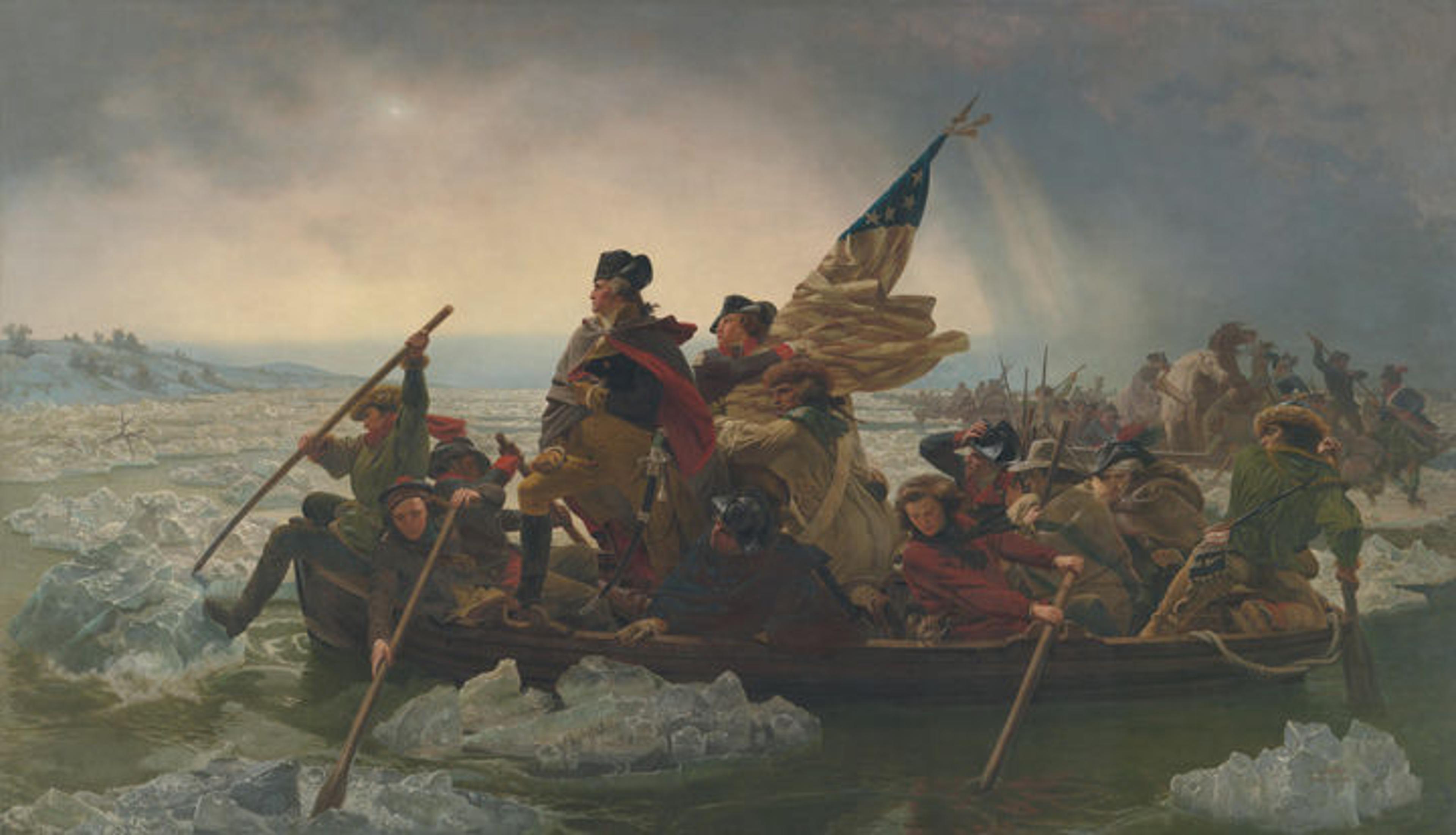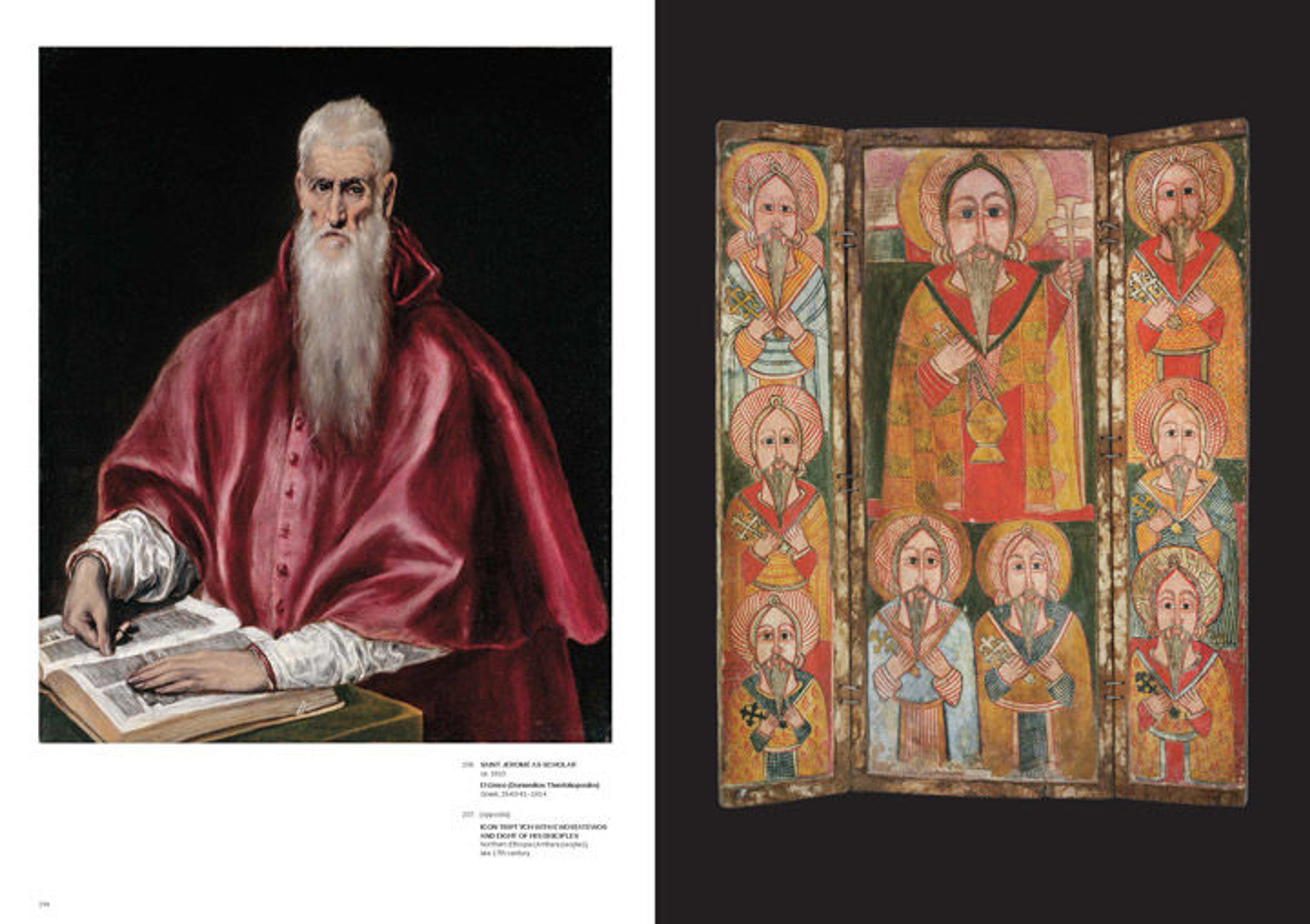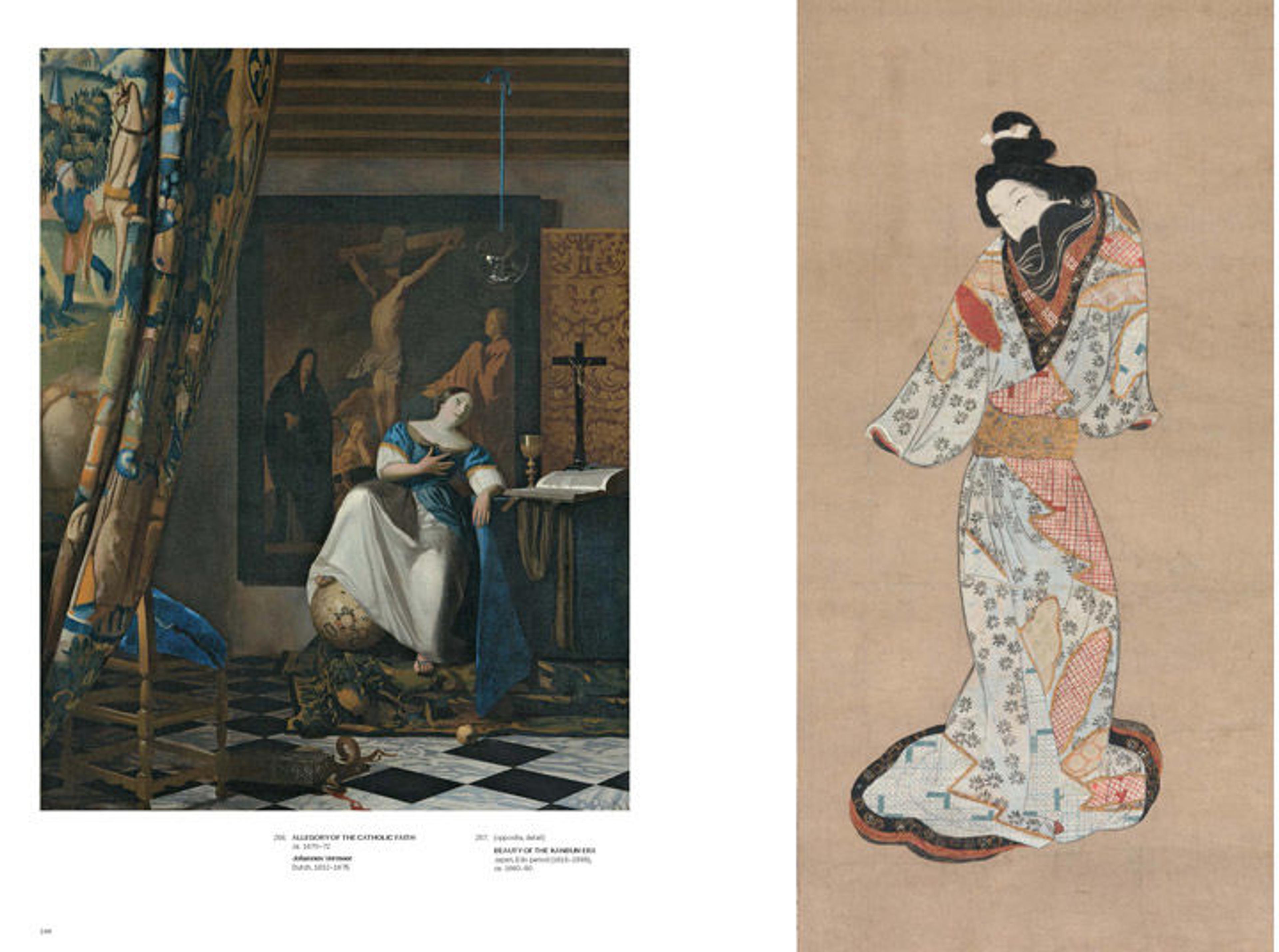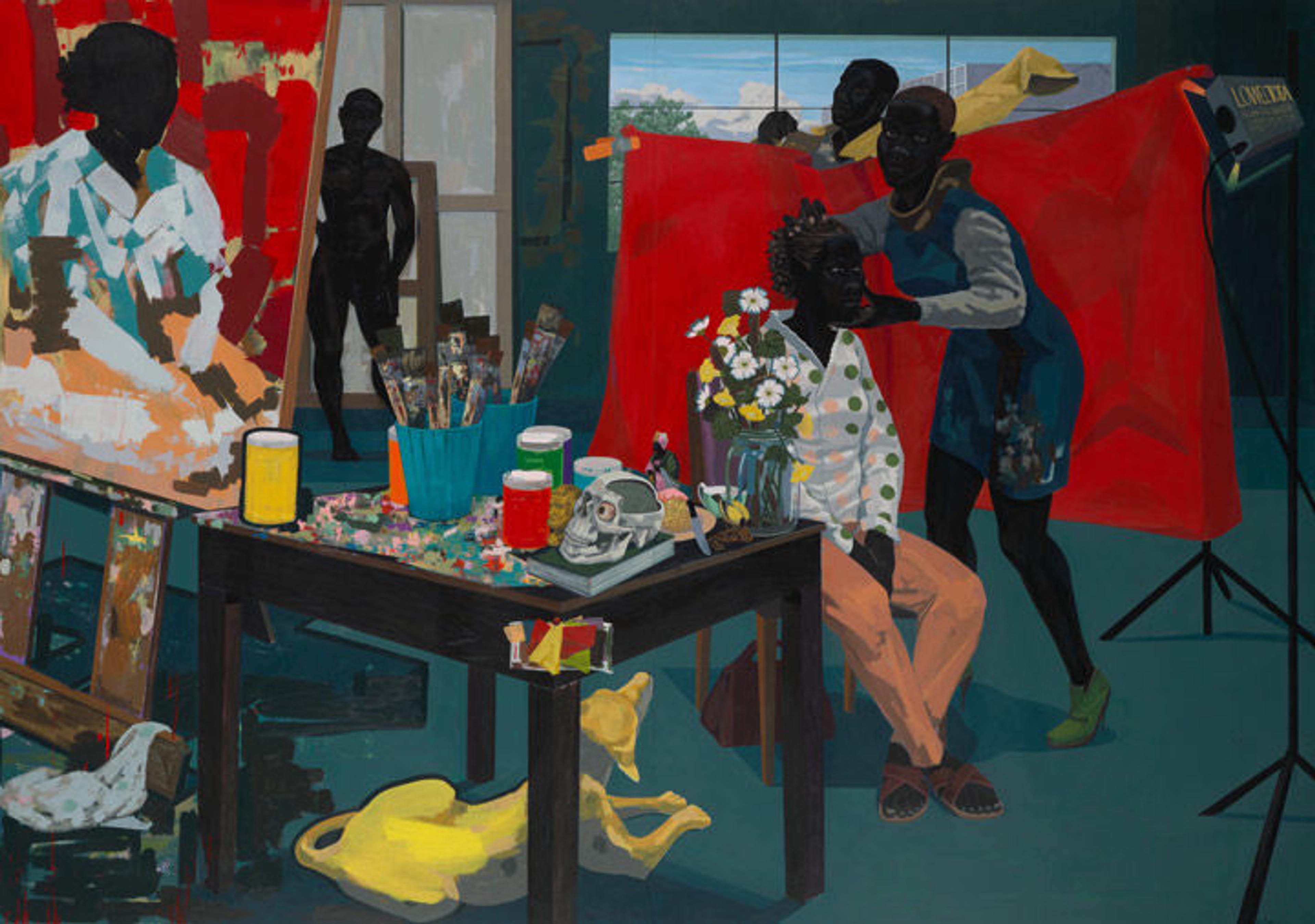Masterpiece Paintings at The Met: Forging Connections through Centuries of Painting

The Metropolitan Museum of Art: Masterpiece Paintings features 1,100 color illustrations and is available in The Met Store and on MetPublications.
«The Metropolitan Museum of Art: Masterpiece Paintings is The Met's first complete survey of its painting collection. This impressive volume includes 500 works from the Museum's collection representing 5,000 years of art history, making it a formidable history of painting and an ideal overview of the iconic masterworks from this world-renowned institution.
Lavish color illustrations present the works chronologically, from ancient Egypt to the present day, and each artwork has an informative and engaging text written by Kathryn Calley Galitz, whose experience as both a curator and an educator at The Met makes her uniquely qualified. I had the opportunity to speak with Kathy about the process of writing this book and the unexpected resonances she discovered across the collection as she worked on this project.»
Rachel High: The word "masterpiece" means different things to different people. What is your definition, and what criteria did you use when selecting works from The Met collection?
Kathryn Calley Galitz: "Masterpiece" is definitely a loaded term, and I took into account several factors in defining it for the purposes of this book. Above all, there are works that are truly the best of the best in terms of their artistic quality. I also included transformative works that had a lasting impact on generations of artists, as well as the most important paintings that the Museum owns by major artists and those that best represent significant art-historical moments. And then, of course, there are works that are simply iconic. How could we publish a book of masterpieces without including such immensely popular works as Emanuel Leutze's Washington Crossing the Delaware and Jules Bastien-Lepage's Joan of Arc?

Emanuel Leutze (American, 1816–1868). Washington Crossing the Delaware, 1851. Oil on canvas; 149 x 255 in. (378.5 x 647.7 cm). The Metropolitan Museum of Art. New York, Gift of John Stewart Kennedy, 1897 (97.34)
The definition of painting is also important to this publication. I wanted to define the term as broadly as possible in order to challenge the narrow definition of a painting as a two-dimensional work of art. In this book, painting takes on many forms depending on the culture and time period—from an ancient potted vessel with painted scenes to a silk scroll, or a fan, or paint on tree bark, or on a palm leaf, or even an illuminated manuscript that could fit into the palm of your hand.
Painting covers everything from the intimate to the epic. I wanted to expand the notion of what painting is and offer some surprises. Readers will find unexpected works along with the more expected ones.
Rachel High: You're a specialist in European painting, but you wrote about 5,000 years of painting across the collection. What did you learn from that process?
Kathryn Calley Galitz: Before I began writing this book, I tended to see things through the lens of my own narrow field of specialization. Branching out and having a more global perspective, both of our collection and of art history, was extraordinarily enriching. Seeing the connections across cultures and across time, and seeing that many artists were preoccupied with remarkably similar themes, really resonated with me. When you look through the pages of this book, you can see and appreciate the works in some ways that you can't in our galleries. Writing this book allowed me to break down all the walls and see the collection in new ways, and I hope readers will experience that for themselves. It certainly broadened my own perspective beyond my specialty, which is, in fact, a very brief moment in the overall history of painting.
Rachel High: You've already touched upon this a bit, but unlike similar surveys of painting, this book is organized chronologically and covers not just Western painting but works from all over the world. This organization allows the reader to see connections between cultures across the entire history of painting. What were a couple of surprising cross-cultural themes that you uncovered?
Kathryn Calley Galitz: The works in this book, regardless of culture or time period, deal with universal themes such as our relation to the natural world. Painters treated nature in various ways, from the realistic to the abstract, and imbued it with different meanings.
The role of religion figures powerfully—and sometime quite personally—across the collection, too. It's evident in Duccio's Madonna and Child, which has burn marks on the frame from the candles of devout worshippers; in the Ethiopian icon pendant meant to be worn around the neck, keeping it close to the heart; and in illuminations from a medieval prayer book that fits into the palm of the hand—all so intimately painted, portable, and personal that you get a feel for the original owners.

Top left: Duccio di Buoninsegna (Italian, active by 1278–died 1318). Madonna and Child, ca. 1290–1300. Tempera and gold on wood; Overall, with engaged frame, 11 x 8 1/4 in. (27.9 x 21 cm). The Metropolitan Museum of Art. New York, Purchase, Rogers Fund, Walter and Leonore Annenberg and The Annenberg Foundation Gift, Lila Acheson Wallace Gift, Annette de la Renta Gift, Harris Brisbane Dick, Fletcher, Louis V. Bell, and Dodge Funds, Joseph Pulitzer Bequest, several members of The Chairman's Council Gifts, Elaine L. Rosenberg and Stephenson Family Foundation Gifts, 2003 Benefit Fund, and other gifts and funds from various donors, 2004 (2004.442). Top right: Double diptych icon pendant, early 18th century. Ethiopia, Central and Northern Highlands. Amhara or Tigrinya peoples. Wood, tempera pigment, string; H. 3 3/4 x W. 2 3/4 in. (9.5 x 7 cm). The Metropolitan Museum of Art. New York, Rogers Fund, 1997 (1997.81.1). Bottom: Attributed to Jean Le Noir (French, active 1331–75) and Workshop. "The Three Living and The Three Dead," from The Prayer Book of Bonne of Luxembourg, Duchess of Normandy, before 1349. French. Tempera, grisaille, ink, and gold on vellum; each folio: 4 15/16 x 3 9/16 in. (12.6 x 9 cm). The Metropolitan Museum of Art. New York, The Cloisters Collection, 1969 (69.86)
There are also some startling visual juxtapositions in the book. For example, El Greco's Saint Jerome as Scholar and the Ethiopian icon triptych with Ewostatewos and eight of his disciples are pictured next to each other, since both works were created at almost the same moment in time. Stylistically, the elongated, bearded figures in both paintings complement one another.

A spread from the book featuring a cross-cultural pairing of El Greco's Saint Jerome as Scholar and an Ethiopian icon triptych
Another example of an unexpected cross-cultural juxtaposition is Vermeer's Allegory of the Catholic Faith and the Japanese painting Beauty of the Kanbun Era. These paintings represent two very different ideals: one religious, and the other decidedly secular with an erotic charge. These moments are fascinating to me and speak to the breadth of The Met's holdings. In an encyclopedic collection like ours, we can get these global perspectives and make links across cultures, offering a much fuller picture of the history of art.

In this pairing from the book, Vermeer's Allegory of the Catholic Faith is presented alongside Beauty of the Kanbun Era, a Japanese painting from the Edo period (1615–1868)
Rachel High: What was your biggest takeaway from writing this book?
Kathryn Calley Galitz: I came into this project steeped in Western art, so I went in with favorite works that really spoke to me. But by the time I completed this book, I had a broader perspective and much more of an appreciation for art outside of my specialty. I've learned so much from my research and from conversations with my colleagues across the Museum who have been so generous in sharing their knowledge and expertise as part of this process. I gained a new appreciation of Asian art as well as contemporary art, which now speaks to me in a way that I hadn't thought it would.
It was special to me that I was able to incorporate some very recent acquisitions that I think have enriched this book—works like Lisa Yuskavage's Bonfire, which the artist painted only one year ago, or Kerry James Marshall's Untitled (Studio). The latter is the last painting in the book and especially appeals to me because Marshall's work is in a constant dialogue with the history of art. To see it independently as an important painting in his own body of work, but at the same time to see it in the context of this book as a masterpiece by an artist who is so engaged with art history—I couldn't have asked for a better work both to end this book and to look ahead to the future of painting.

Kerry James Marshall (American, born 1955). Untitled (Studio), 2014. Acrylic on two PVC panels; 83 5/16 x 119 1/4 in. (211.6 x 302.9 cm). The Metropolitan Museum of Art, New York, Purchase, The Jacques and Natasha Gelman Foundation Gift, Acquisitions Fund and The Metropolitan Museum of Art Multicultural Audience Development Initiative Gift, 2015 (2015. 366) © Kerry James Marshall
Related Links
The Met Store: The Metropolitan Museum of Art: Masterpiece Paintings
Connections: "Smile," by Kathy Galitz
Related Event
Masterpiece Dialogues: Great Paintings from The Metropolitan Museum of Art
Tuesday, September 27, 11 am
The Met Fifth Avenue - The Grace Rainey Rogers Auditorium
$30
Five hundred works of art spanning 5,000 years are featured in the new book Masterpiece Paintings from The Metropolitan Museum of Art. Celebrate the unparalleled breadth and depth of The Met collection with author Kathryn Calley Galitz. A book signing will follow.
Rachel High
Rachel joined the Publications and Editorial Department in 2014 where she has previously held the roles of Publishing and Marketing Assistant and Assistant for Administration. She manages the MetPublications website, the Museum's text licensing program in all languages, and the @MetPubs Instagram account. In addition to her work marketing The Met's titles, Rachel also consults on Museum co-publications and the Costume Institute catalogues. She has been a speaker at the National Museum Publishing Seminar and is an organizing member of the International Association of Museum Publishers. She holds a B.A. in Art History from New York University and an M.A. in Art History from Hunter College. Her own research centers on the intersections of art and publishing.
Selected publications
“Something Else Press as Publisher.” Master’s thesis, Hunter College, City University of New York, 2020. CUNY Academic Works.